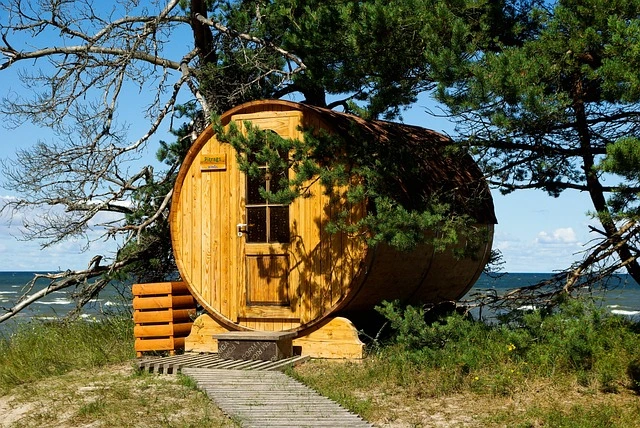[ad_1]
10
In the pursuit of wellness and relaxation, having an at home sauna can transform your daily routine into an oasis of calm and rejuvenation. Building your sauna might seem daunting, but with the proper planning, it can be a rewarding project that enhances your home and wellbeing. Here’s everything you need to know to create your personal sauna sanctuary.
Step 1: Planning and Design
Choosing the Right Location
Your first decision is where to build your sauna. Common locations include basements, garages, outdoor spaces, or dedicated rooms within the house. Considerations should consist of privacy, accessibility, and ventilation. Outdoor installations offer a more authentic experience, especially if you can include a view, but require weatherproofing and insulation.
Size and Layout
Determine how many people will typically use the sauna at one time to decide on the size. A standard home sauna size is between 4 to 8 feet square. Planning the layout is also crucial; allow space for benches, possibly at different levels for varied heat intensity, and ensure there’s enough height for standing comfortably.
Step 2: Construction
Materials
The choice of wood is vital for the interior of your sauna. Softwoods, like cedar, hemlock, and spruce, are preferred for their ability to resist moisture and their insulating properties. Cedar is especially popular due to its natural resistance to rot and mildew, plus it emits a pleasant aroma when heated.
Insulation and Ventilation
Proper insulation and vapor barriers are critical to keep the heat and cold out. Insulating the walls, ceiling, and floor will make your sauna more efficient. Ventilation is necessary to replace the air and control humidity. Plan an intake vent near the floor and an outtake vent near the ceiling.
Step 3: Heating Your Sauna
Choosing a Heater
The heart of your sauna is the heater. You can choose an electric heater, wood-burning stove, or infrared heater. Electric heaters are convenient and easy to control while wood-burning stoves offer a traditional experience with the added benefit of a delightful smell. Infrared saunas don’t heat the air; instead, they heat your body directly, which some people prefer for health reasons.
Controlling the Temperature
Control systems vary depending on the type of heater. Electric and infrared heaters often come with digital controls for precise temperature regulation. For wood-burning stoves, temperature control is managed manually by adjusting the amount of wood burned.
Step 4: Adding the Finishing Touches
Lighting and Accessories
Soft lighting can enhance the sauna experience; consider installing dimmable LED lights. To add to the ambiance and functionality, include a waterproof sound system, hooks for towels, a wooden bucket and ladle for water to create steam, and essential oils for aromatherapy.
Seating
Benches should be made of the same softwood as the rest of your interior. Depending on the size of your sauna, you can have benches on one or both sides, and having tiers can allow users to choose their preferred heat level, as the higher seats will be hotter.
Door
The sauna door plays a crucial role in maintaining the internal temperature. It should open outwards and have no lock (for safety reasons). Using insulated glass will retain heat, allow light, and create a sense of space.
Step 5: Safety First
A sauna is a wonderful addition to your home, but remember to put safety first. Ensure that everything is installed correctly and that a professional electrician handles electrical components. Keep a fire extinguisher nearby if you’re using a wood-burning stove. Lastly, be mindful of how long you spend in the sauna to avoid overheating.
Conclusion
Building an in-home sauna can be a deeply satisfying project that adds value to your home and provides endless hours of relaxation and health benefits. While it requires careful planning and work, the result is a space that offers a private retreat for warmth and wellbeing. Whether you choose an indoor or outdoor sauna, electric or wood-burning, the key is to customize it to your preferences and needs, ensuring a perfect sauna experience right at home.
[ad_2]
Source link
